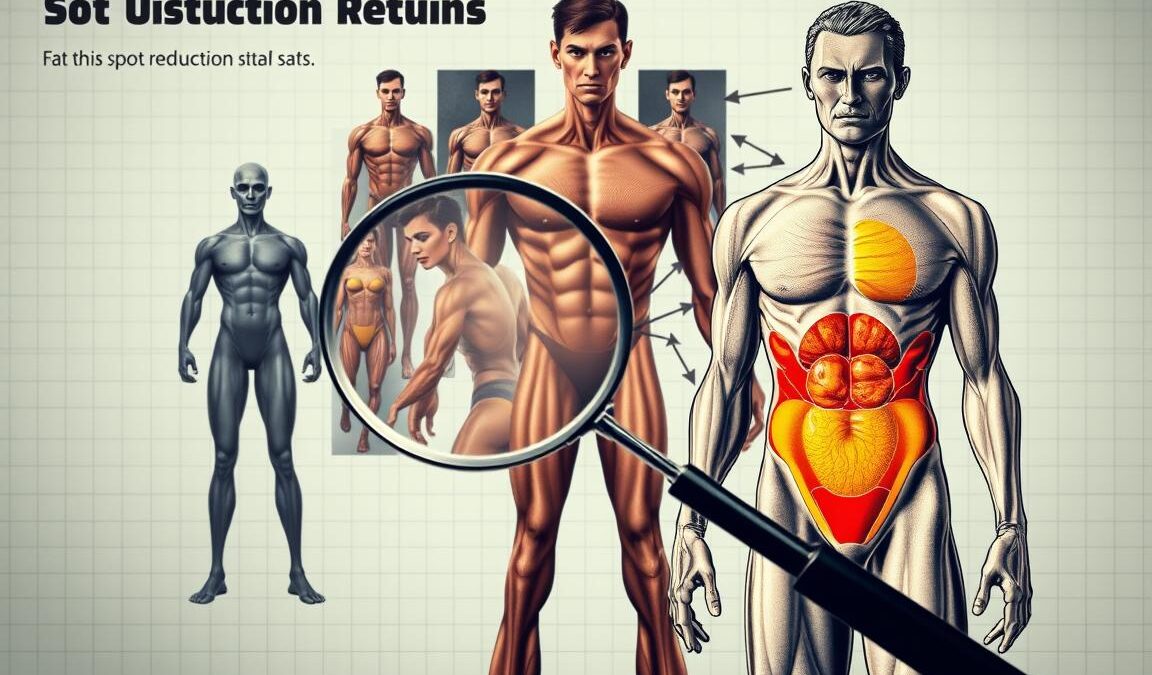
Practicing Mindfulness During High-Intensity Training for Better Results
You can blend mindfulness during high-intensity training with your regular workout to sharpen focus and protect the body while you push hard.
Think two to five minutes of simple meditation or breath work before a session. That short routine tightens the mind-body connection, primes the brain for effort, and lowers injury risk, as coaches like Michael Gervais note.
Use one clear cue at a time—breath, posture, or a brief mental check—to keep movement efficient. This is not softer training; it’s smarter work that helps your performance and recovery the same day.
Start small, stay consistent, and you’ll notice better focus, cleaner reps, and faster bounce-back between intervals.
Key Takeaways
- Two to five minutes of pre-workout breathing sharpens focus and primes the brain.
- Short mental cues reduce wasted motion and protect key joints.
- Combining meditation with intense exercise improves both body and brain outcomes.
- Simple, repeatable routines fit any gym or at-home workout plan.
- Better focus during movement leads to more quality reps and faster recovery.
Why pairing mindfulness with HIIT boosts performance right now
A tiny pre-workout habit makes a big difference. Spend two to five focused minutes and you’ll start your session calmer and more efficient.
This routine sharpens focus, steadies breath, and protects the body—right away.
Coaches like Holly Rilinger and Adam Rosante open classes with short meditations to help students leave daily stress at the door. CorePower Yoga layers mantras to keep attention tight while the class moves hard. You can use the same tools in any workout.
Train smarter, not softer—what you’ll apply today
- Pre-set: two to five minutes of breath and attention to prime your energy.
- Sync breath with movement to stabilize pacing and keep form under stress.
- Use one mantra and one technical cue per set to prevent mental overload.
- Between stations: three deep breaths and a single reset cue to drop tension.
These steps give immediate wins: smoother starts, steadier pacing, fewer sloppy reps. They cut stress and help your body align under load. Try this now and you’ll notice the difference in the same session.
| Quick Routine | What to Do | When to Use | Immediate Result |
|---|---|---|---|
| 2–5 minute prime | Box breaths + short scan | Before first interval | Clearer focus, steadier energy |
| Sync breathing | Match inhale/exhale to reps | During high-effort sets | Better form, less wasted effort |
| Micro-reset | 3 deep breaths + cue | Between stations | Faster recovery, fewer sloppy reps |
| Mantra + cue | One phrase + one technical fix | Per set | Sharp attention, lower stress |
Want more on mental edge for CrossFit-style work? Check this mental toughness guide for practical drills and class-style tips.
The science-backed edge: how mindfulness elevates speed, stamina, and recovery
Simple mind-and-breath tools give measurable boosts to speed, stamina, and post-workout recovery. They change both brain wiring and how your body handles stress and pain.
Brain and body changes: BDNF, focus networks, and pain perception
Intense, complex movement raises BDNF, a growth factor that helps learning and pacing. That means your brain remembers better and you adapt faster next session.
Short meditation and focused breath strengthen attention and reduce emotional spikes. You feel less acute pain and can hold form longer without pushing effort into inefficiency.
Measured gains: longer time to exhaustion, faster race times, less anxiety
- About 13.5% longer time to exhaustion in controlled studies.
- Roughly 7% faster race times when mental anchors cut wasted motion.
- Pre-event anxiety drops 23–30%, so you race cleaner and calmer.
Injury risk and recovery: better movement quality, quicker reset between intervals
Better body awareness means fewer overuse problems—studies show ~25% fewer injuries tied to improved form. Quick between-interval resets speed physiologic recovery by about 20%.
| Benefit | Typical Change | What you feel |
|---|---|---|
| Endurance | +13.5% | Longer steady effort |
| Speed | ~7% faster | Smoother splits |
| Recovery & injury | ~20% faster / 25% fewer injuries | Quicker resets, cleaner reps |
Put simply: use brief meditation, a breath anchor, and one movement cue. You’ll train smarter, protect the body, and log real gains you can track.
Mindfulness during high-intensity training: the core skills you’ll use
These core skills help you stay present, steady your breath, and move cleaner under load. Each one is short, clear, and easy to apply when you get tired.
Present-moment awareness and non-judgmental observation under stress
Present moment: notice foot contact, hip angle, or shoulder tension on one rep. Name it, then fix one small detail. This keeps your attention on what matters and stops spirals of negative thoughts.
Breath control patterns that stabilize form and energy
Use steady nasal inhales and timed exhales as a metronome. Sync the inhale to the reset and the exhale to effort. This breathing pattern steadies rhythm and protects your core.
Body scanning for movement quality, balance, and safer strength output
Quick scans on rest spots find tight jaws, tensed shoulders, or sloppy feet. Pick one cue per set—“press midfoot”—and repeat it. End each set by noting one win to lock in better performance.
- State check: “calm face, firm core” before each effort.
- Let stray thoughts pass; return to the next breath or cue.
- Repeat the same prep stance and cue so the body learns patterns under stress.
Pre-workout priming: five mindful minutes that change the whole session
Give yourself five minutes up front to scan, see the reps, and lock a single cue—then let the work follow.
Body scan + visualization: set intention, spot tightness, rehearse clean reps
Two minutes: do a head-to-toe body scan. Flag tight spots—calves, hip flexors, shoulders—and pick one mobility drill to free the area. This lowers injury risk and improves movement when you load up.
Two minutes: visualize your first interval in the present moment. Picture stance, the first breath, and one clean rep. Rehearsal sharpens focus and boosts performance from rep one.

Mantras that work when it’s hard: “Yes you can,” “I can do this”
One minute: choose one behavior cue like “steady pace, tall posture” and one short mantra. Use three slow breaths to seal the routine—exhale longer than you inhale.
- Phone note: jot today’s cue and target so your attention returns between stations.
- One-minute option: one quick scan, one cue, one breath—enough to steer the first efforts.
| Step | Time | Benefit |
|---|---|---|
| Scan | 2 minutes | Find limits, reduce injury risk |
| Visualize | 2 minutes | Sharper execution, cleaner reps |
| Mantra & seal | 1 minute | Stable attention, calmer start |
In the heat of the workout: breathing, cues, and resets that keep you efficient
When the session heats up, smart breathing and one-line cues keep your reps clean and your energy steady.
For running segments use a 2:3 or 3:3 breathing pattern. Match steps to breaths so effort stays steady and you avoid a premature spike in heart rate.
In strength sets, exhale sharply on the exertion—press, pull, or jump. That power breath protects your spine and helps you express more force without over-bracing.
Fast, practical resets
Between stations take three diaphragmatic breaths. Drop your shoulders, soften the jaw, and pick one cue for the next block. Keep the whole reset under ten seconds.
- Box breathing (4‑in, 4‑hold, 4‑out, 4‑hold) during transitions restores core tone and attention without cooling off.
- On carries or tempo work, use a steady 4‑in/4‑out rhythm to smooth energy and keep posture tall.
- If form slips, pick one technical cue—“knees track over toes” or “neutral ribs”—and hold it for the next five reps.
| Situation | Breathing or cue | Benefit |
|---|---|---|
| Running segments | 2:3 or 3:3 | Prevents early fatigue, steadies pace |
| Strength sets | Power exhale on effort | More force, safer spine |
| Between stations | Three belly breaths + one cue | Faster reset, better focus |
Treat breath as your pace governor. If it gets ragged, back off for 15–30 seconds, reclaim rhythm, then build back. End each set with a quick check—grip, posture, foot pressure—so the next movement costs less time and energy.
A guided mindful HIIT mini-circuit you can start today
Start with a short, practical circuit that trains balance, agility, and core control in one tidy loop. This sequence fits a small space and needs no equipment. Use simple cues—one thought per movement—to keep quality high.

Sequence walk-through
- Awkward airplane — from all-fours extend opposite arm and leg into a long line. Hold one breath, widen to a lateral reach, then return. Switch sides. (8 reps each side)
- Lateral weight shift — stand wide and shift side-to-side with random reaches. Move for 2 minutes. Keep eyes steady to train concentration and whole-body movement.
- Reverse lunge to squat — alternate reverse lunges into a deep squat for 90 seconds. Stay tall, slow the negative, feel foot pressure to protect knees and recruit posterior muscle.
Agility and core control
- Runaround + X jumps — fold a mat into a square and run around it clockwise, then counter, counting laps for 90 seconds. Follow with 90 seconds of diagonal X jumps. Use counting as a focus anchor and steady breathing.
- Spiderman crawl — push-up position, lower halfway as a knee tracks to triceps, then press back. Do controlled reps for 90 seconds to reinforce core control.
- Warrior three — hinge into a T, arms forward, back leg long. Hold 30 seconds per side to build balance and strength in a single-leg position.
Recovery finish
Victory pose: stand tall with arms in a V and take three deep breaths. Lie supine and do 3–5 minutes of diaphragmatic breathing to seal the work and calm the mind.
| Exercise | Time / Reps | Cue | Benefit |
|---|---|---|---|
| Awkward airplane | 8 each side | Long line, one breath | Balance, posterior muscle control |
| Lateral weight shift | 2–3 minutes | Eyes steady, random reaches | Movement patterns, concentration |
| Reverse lunge → squat | 90 seconds | Tall position, slow negative | Foot pressure, knee safety |
| Spiderman + Warrior III | 90s / 30s each | Deliberate breath, hips square | Core, balance, single-leg strength |
How to progress: repeat the circuit once as a warm-up or twice for a full workout. Keep cues simple and return to one breath or one word when form slips.
Recover like a pro: post-workout mindfulness that speeds bounce-back
Finish strong by switching gears: short, deliberate recovery practices speed repair and lower stress. Treat the last 15 minutes as your reset window. Small actions now make tomorrow easier and keep performance climbing.
Progressive muscle relaxation to drop cortisol and release hotspots
Start with PMR for about 10 minutes. Lying or seated, tense each muscle group for five seconds, then release. Move from feet up to the face.
Notice the contrast: tight then soft. That drop in tension helps lower cortisol and soothes muscle soreness. Focus on calves, quads, and forearms if they feel hot or painful.
Cool-down meditation: gratitude, breath, and a quick plan
Follow PMR with a 5-minute meditation. Breathe slowly, scan the body for fatigue, and name one thing you appreciate about your effort.
- Pick one care task for a hotspot: light stretch, mobility drill, or a short walk.
- Choose one word to set your evening state — for example, “easy.”
- Log one sentence: what worked, what to tweak, tomorrow’s priority.
Finish: take three slow belly breaths, stand, and walk for two minutes to seal the routine. If you want structure, add legs-up-the-wall for three minutes to offload the back and calm the system.
| Step | Time | Key effect |
|---|---|---|
| PMR (feet → head) | 10 minutes | Lower stress, ease muscle tension |
| Recovery meditation | 5 minutes | Mind-body connection, motivation |
| Hotspot care + log | 3–5 minutes | Reduce pain, plan recovery |
Quick takeaway:this short routine turns exercise into progress. Use it often and your fitness, sleep, and resilience all improve.
Conclusion
Wrap each session with a practical routine that protects your body and sharpens performance over time.
You’ve got a simple plan: a short pre-session primer, one cue in the set, and a brief recovery to seal the work. Keep the practice daily—one minute counts more than a long, sporadic session.
Use one mantra, one technical cue, and three breaths between efforts to hold form and cut risk of injury. Track what you fix each day; small position and core gains stack into higher-level results.
Let meditation be practical, not perfect. Your mind will wander; bring it back. Scale to your level, label any pain, adjust one thing, and keep moving.
Start today: run the five-minute primer, apply one cue in your next interval, and close with two minutes of recovery—then do it again tomorrow.


